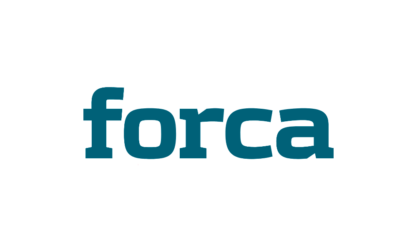Morgan Stanley ser tendenser til en kraftigt vækst blandt Low-Key Tech-selskaber, f.eks. inden for cloud, automatisering og planlægning. De kan komme til at udgøre en trusssel mod de store high-tech selskaber. Pandemien har givet dem helt nye muligheder, bl.a. i brugen af cloud-løsninger og i brugen af streaming. Meget ofte er der tale om en decideret low-key teknologi, f.eks. til planlægningsopgver i byggesektoren. Det kan blive en af de mest spændende perioder i teknologiens udvikling, mener Morgan Stanley.
Low-Key Tech to Take the Spotlight
Surging demand for digital products and services is giving rise to a breed of companies facilitating cloud computing and data automation. Could their consolidated market share rival that of today’s tech blue chips?
A year after the pandemic sent the world into lockdown, many of the sectors that met the critical needs of remote work and socially distanced living have emerged as clear winners. Some of the more prosaic technologies—think business-process coding, cloud services and semiconductors—have accelerated in a kind of stealth mode, but as COVID begins to recede, they could take center stage in terms of growth potential and deals.
It’s one of the biggest takeaways from Morgan Stanley’s recent Technology, Media and Telecom U.S. Conference, held virtually this year, gathering more than 290 companies and 13,000 investors to discuss business outlooks and the industries’ biggest trends.
“For current large-cap companies resting on their laurels, there’s a new wave of companies coming up,” says Owen O’Keeffe, Head of Americas Technology M&A at Morgan Stanley. “This group, which may focus on combining with other emerging technology companies, could disrupt today’s biggest players.”
Here’s a look at the key themes that underpin these up-and-coming companies and the innovations driving tech, media and telecom growth and potential deals.
More Chips, Please!
It’s hard to remember another time when the semiconductor industry has seen higher demand than right now. Orders for microchips ramped during the pandemic, and manufacturers can barely keep pace to deliver enough supply. Some of that rise in demand had been predicted.
The surge in popularity for online gaming during COVID lockdowns played a big part in the chip-supply issues. Many consumers snapped up gaming laptops for their portability and powerful in-game technologies, such as AI ray tracing, which enhances lighting effects in 3D. “Socializing with friends at all ages on gaming platforms is here to stay,” says Umi Mehta, Global Head of Internet Banking. “In places like Asia, Southeast Asia and Europe, playtime and engagement are consistent with what they were during the height of the pandemic in those areas,” which portends continued strength in other markets, Mehta says.
Cloud Services Spurring Deals
Like semiconductors, the cloud powers almost every technology and industry, amid soaring demand for processing capabilities, storage and cloud computing data transfer from across sectors including industrials, health care and consumer goods. Technology-enablement companies, whose products and services are digitizing workflows, creating big data analysis tools and techniques, facilitating time efficiency and helping companies integrate these processes are some of the biggest winners capturing revenue and investor dollars.
“Businesses are investing the most in digital transformation efforts, such as cloud acceleration, the future of work and automation,” says Melissa Knox, Head of Software Investing Banking at Morgan Stanley. “The companies facilitating these technologies are establishing niches and driving a huge wave of innovation.”
Some cloud-service companies may also pursue growth opportunities, especially equity-swap M&A deals that allow them to leverage relatively robust stock valuations, rather than cash, according to O’Keeffe. More incumbent tech giants have begun to see the cloud-computing sector as competition, amid their growing market share, which could also spur deal-making among large-cap players, he says.
“The chess board is super dynamic right now. There’s emerged a group of mid-cap companies in the $10 billion to $100 billion-plus size that are taking share from existing players or capturing a lot of IT spend where nothing is in place today. The bigger companies have no way to innovate out of that battle, which creates the need for them to do M&A.”
Low-Code & No-Code
Demand for digitalization spurred by COVID-19 also gave birth to a class of companies that started low-code or no-code development platforms, making it easier for developers and non-developers to automate workflows or build websites while circumventing writing code. Companies can more easily integrate features, such as mobile text marketing, while developers can more quickly program apps and websites. The companies offering these capabilities usually have tiered pricing plans, from “freemium” to tailored and scalable enterprise-level packages.
Historically, companies acquire specific software to manage certain tasks, such as supply chains, customer relationships or human resources. Now, using low-code and no-code technology, businesses can program workflows that otherwise lack off-the-shelf apps. For example, says Knox, some construction companies use low-code and no-code platforms to automate project-planning for subcontractors, in terms of locations and hours, then communicate those plans to everyone involved.
Amid high demand for this technology, large and midsized tech firms are now competing for market share, according to Knox and O’Keeffe. “Low-code and no-code platforms are just one example of why it’s the most exciting time in the history of technology,” Knox says. “M&A is one key way that companies can continue to compete and build the next pillars.”








